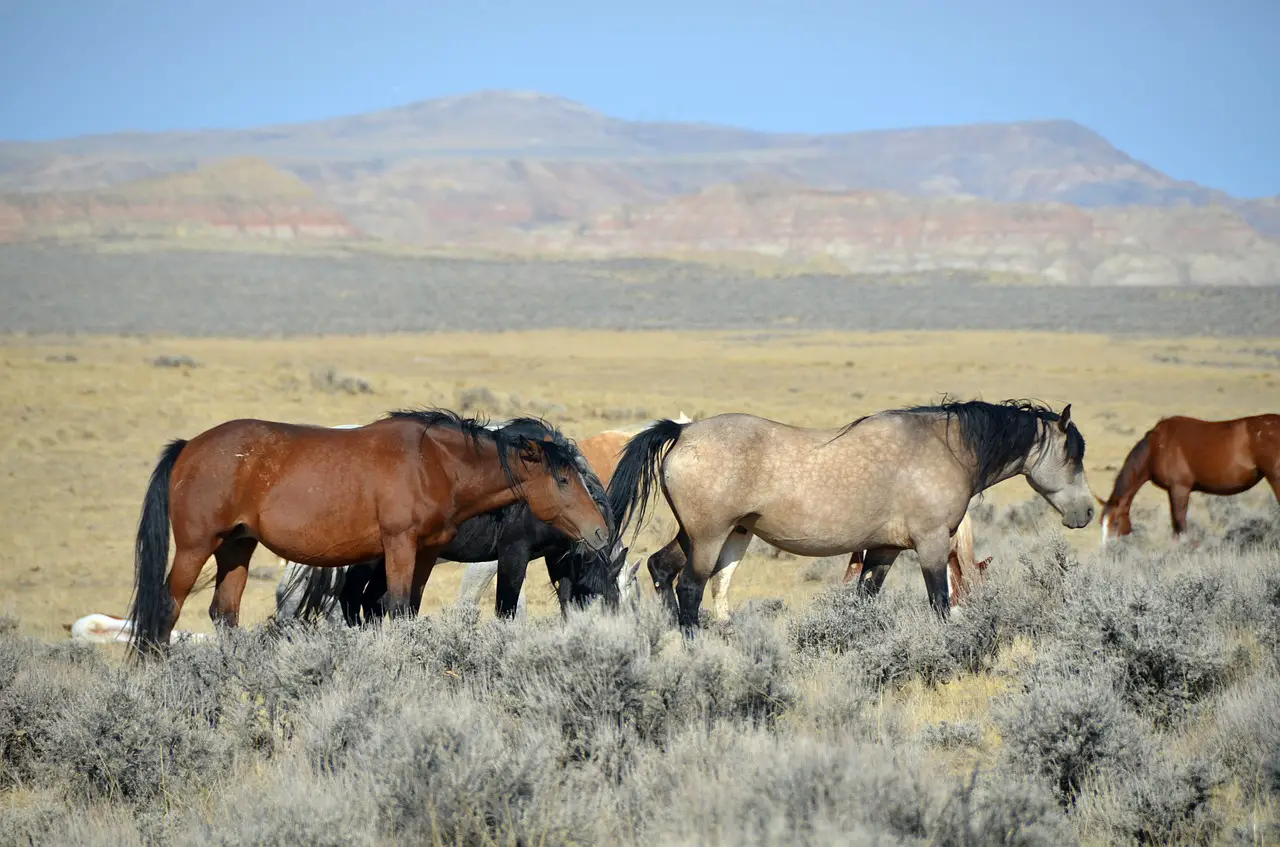Last Updated on February 22, 2022 by Allison Price
Many people are curious about the care of horses in the wild, especially with the BLM Mustangs getting more media attention and celebration events being held on the east side for island ponies. Horses require a lot of care because they are sensitive and need to be treated with love. Horses require so much of our attention due to the way we care for them. How do wild horses trim their hooves if farriers are out every six weeks like clockwork?
Table of Contents
- The Hoof
- Selective Breeding
- Horses Captive
- How do wild horses trim their hooves?”
- Natural Hoof Care
- Closing Thoughts – Wild Horse Hooves
Horse hooves are not like a toenail, contrary to popular belief. The thick hooves provide protection at the ends of the legs and shock absorption. The keratin makeup that we use for our hair and nails may be the reason behind the comparison. hooves protect the coffin bones, but nails are not protected by them. The pedal bone or coffin bone is the lowest bone on horses’ front and rear legs. Hoof problems and weak hooves can cause serious or fatal injuries. We rely on farriers and appreciate them! “No hoof, no horse.”

Selective Breeding
We choose which traits and features are passed on to our horses when we take them from the wild. A horse may have persistent hoof problems, or conformation problems that can be easily corrected with corrective shoeing. This horse could be used later on for breeding.
It is survival of the fittest in the wild. These horses are more likely to have hoof problems or poor growth and will not live. It’s not pretty, but it is part of nature. Horses are prey animals. Horses need to be able run, escape and remain on their feet for long periods of time to graze. Horses with hoof problems are automatically culled because they cannot keep up with the rest of the herd. Only animals that have strong traits will be able to reproduce.
Horses Captive
Nature does not intend for horses to be kept in stalls or turnouts. This is against their nature. Horses kept in captivity by humans can experience problems that they would never encounter in their natural environment. Captivity and lack stimulation can lead to neurotic behaviors like weaving and cribbing. Horses will average between 10-20 miles per day in the wild to get their food and water.
Many questions are asked about the ability of wild horses to tolerate cold temperatures. Horses can move in nature freely. Horses can also search for cover or windblocks in adverse weather conditions. A horse living in a pasture might not have shelter or trees. The owners might choose to cover the horse with blankets in the event of severe weather. When they are in captivity, we remove all options for self-care.
How do wild horses trim their hooves?
Wild horses don’t need to trim their hooves. Horses naturally care for their hoof growth, unlike other animals that will file or maintain their nails. Wild horses won’t have outgrown hooves. Because wild horses travel extensively, and they cross many terrains on their journeys, hooves naturally get ground to a reasonable length. These animals don’t live in a cage and will wear their hooves down accordingly. Their hooves will wear down at the same pace as their growth. Horses are often able to run in addition to their daily travels. A prey animal’s life!
Natural Hoof Care
Horses living in nature can also move freely, so they won’t have to be restricted from moving in wet or moist conditions. Horses in the pasture may find themselves trapped in floodplains after heavy rains. There are no other options. The moisture can cause bacterial and fungal infections and may even cause havoc to horses’ hooves. Wild horses are able to move higher and won’t be trapped in stalls that have been neglected or covered with urine-soaked shavings.
Another issue is shoes. Horses aren’t meant to haul heavy loads or ride on cement roads. They also don’t have to deal with the unnatural workloads of humans riding/working. Wild horses don’t require shoes. Horses with weak hooves, imbalances, and other problems that require shoes for proper function will often be unable to keep pace with the rest of the group.


